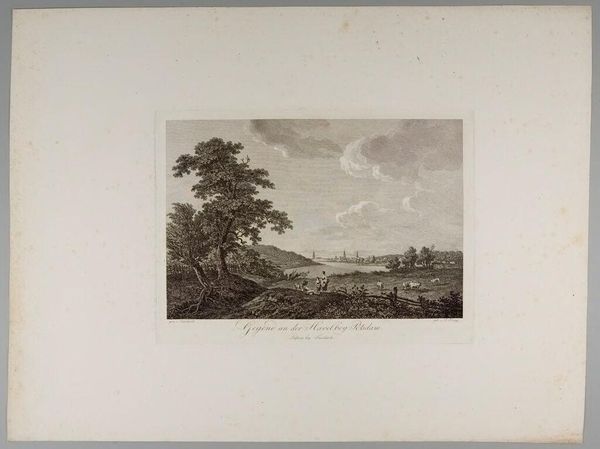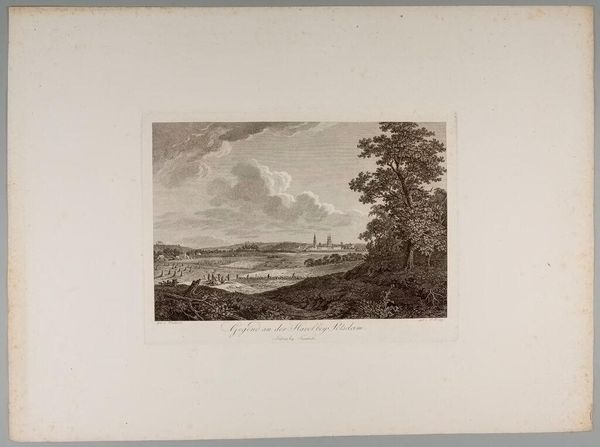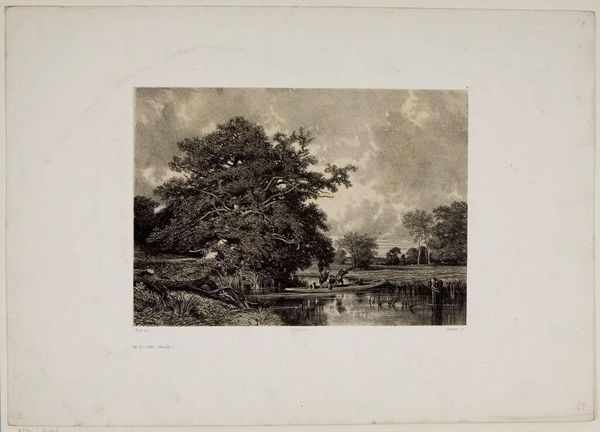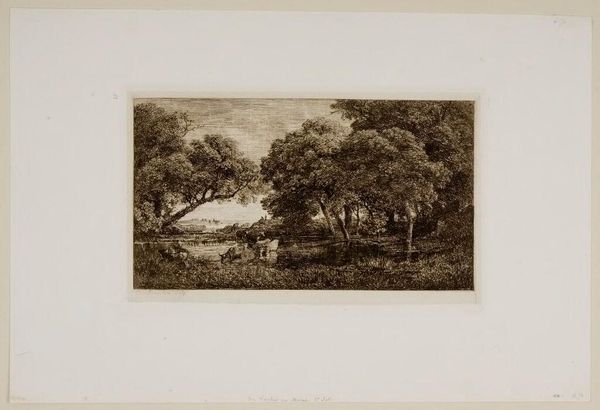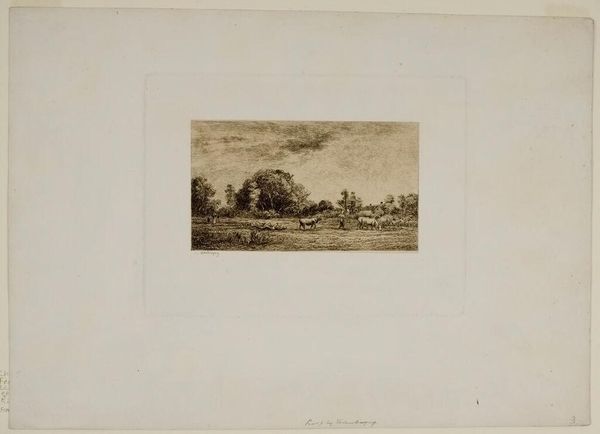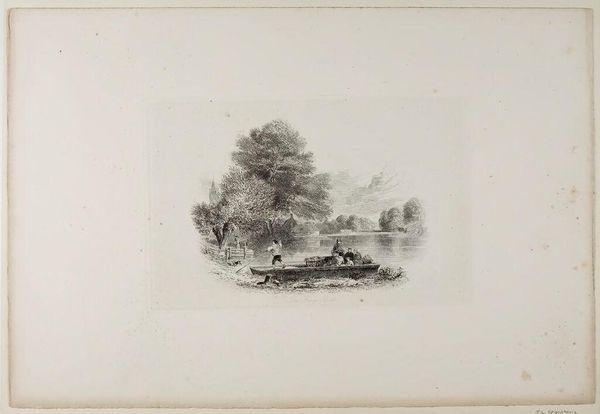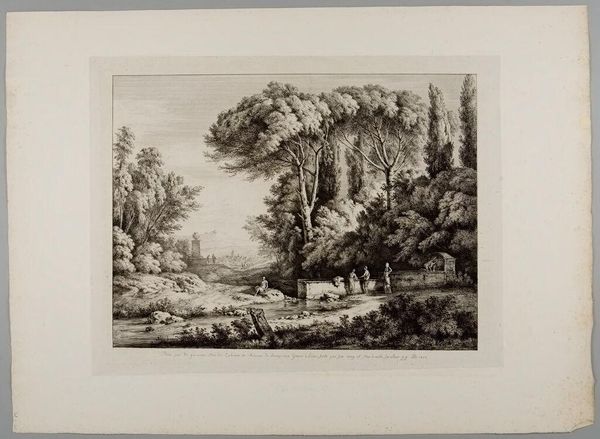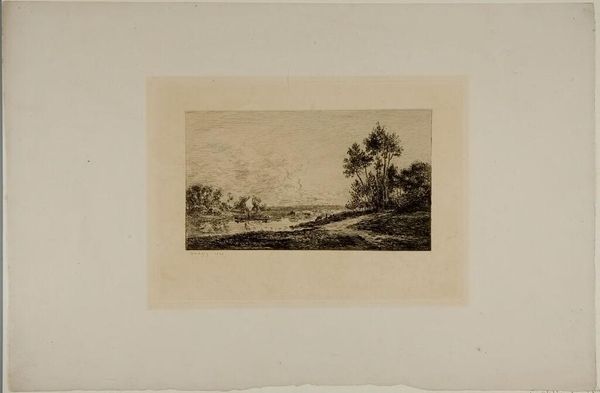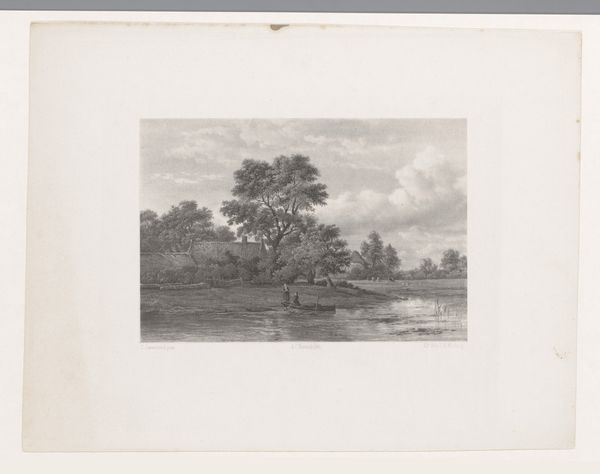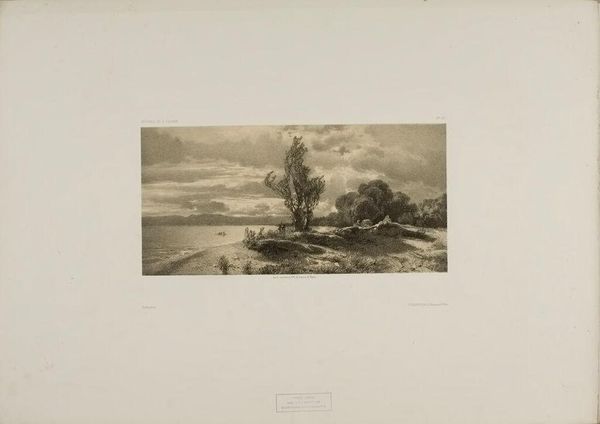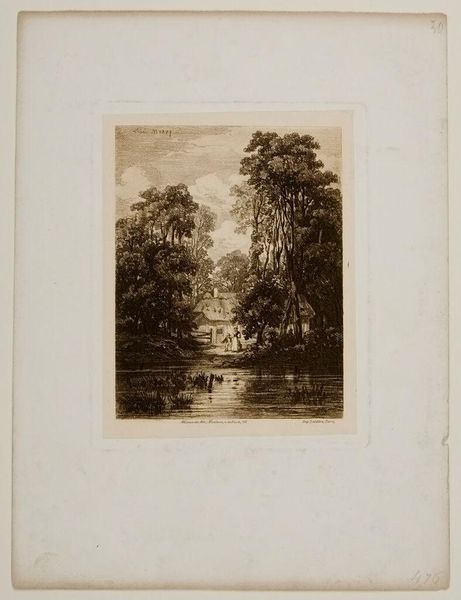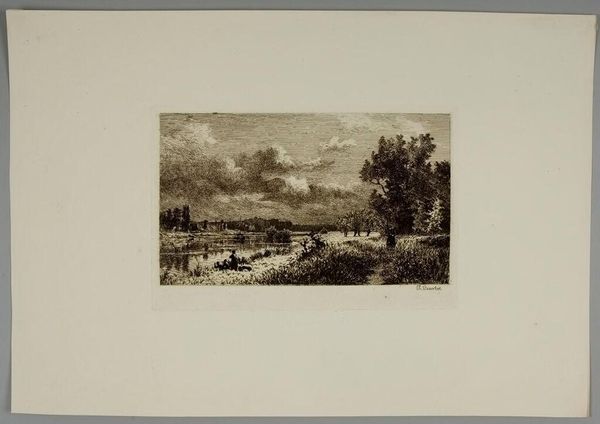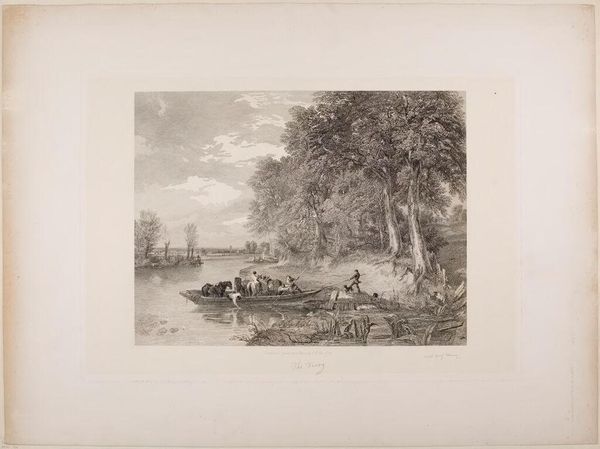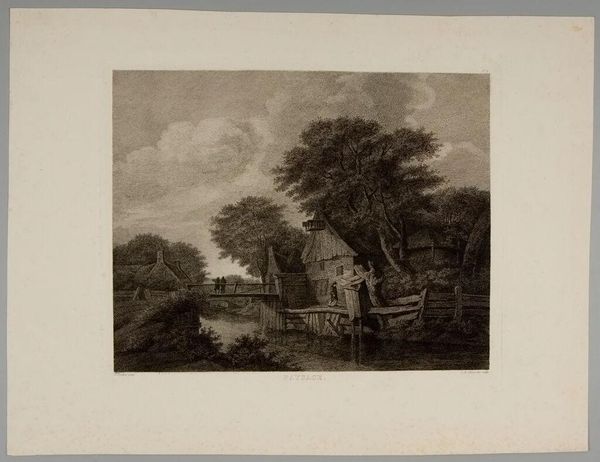
Copyright: CC0 1.0
Curator: This is "Plate I" by Adrian Zingg, made sometime between his birth in 1734 and his death in 1816. It's currently held at the Harvard Art Museums. Editor: It's lovely. Quiet, almost serene. The composition leads my eye gently across the water to that small village on the opposite shore. Curator: Zingg was a master of etching, and you can really see his skill here in the way he's used lines to create texture and depth. Look at the different ways he renders the foliage versus the water. Editor: Yes, and consider the societal implications of landscape art at this time. Who had the leisure to enjoy these scenes, to commission such works? How does it reflect power dynamics? Curator: Absolutely, this was a growing market, with prints like this often consumed by the rising merchant class, demonstrating their wealth and refined taste. Editor: It's a window into a specific social strata, a visual representation of privilege amidst broader inequalities. Curator: Zingg's technique offered a cost-effective way for more people to enjoy art, challenging the exclusivity of painting. Editor: Precisely, art becoming a commodity, a signifier within an evolving social landscape. Curator: Considering its context helps us understand the complex relationship between art, labor, and social standing. Editor: Indeed, art is never created in a vacuum. Thanks to Zingg, we can better examine these dynamics.
Comments
No comments
Be the first to comment and join the conversation on the ultimate creative platform.
